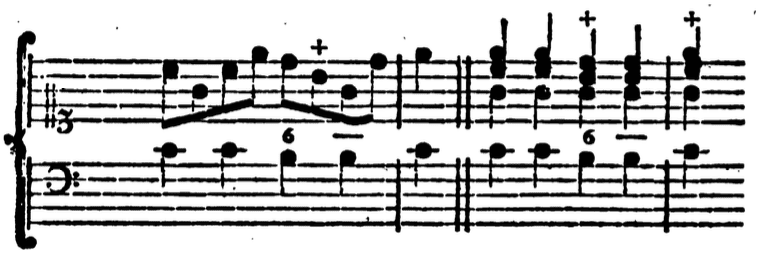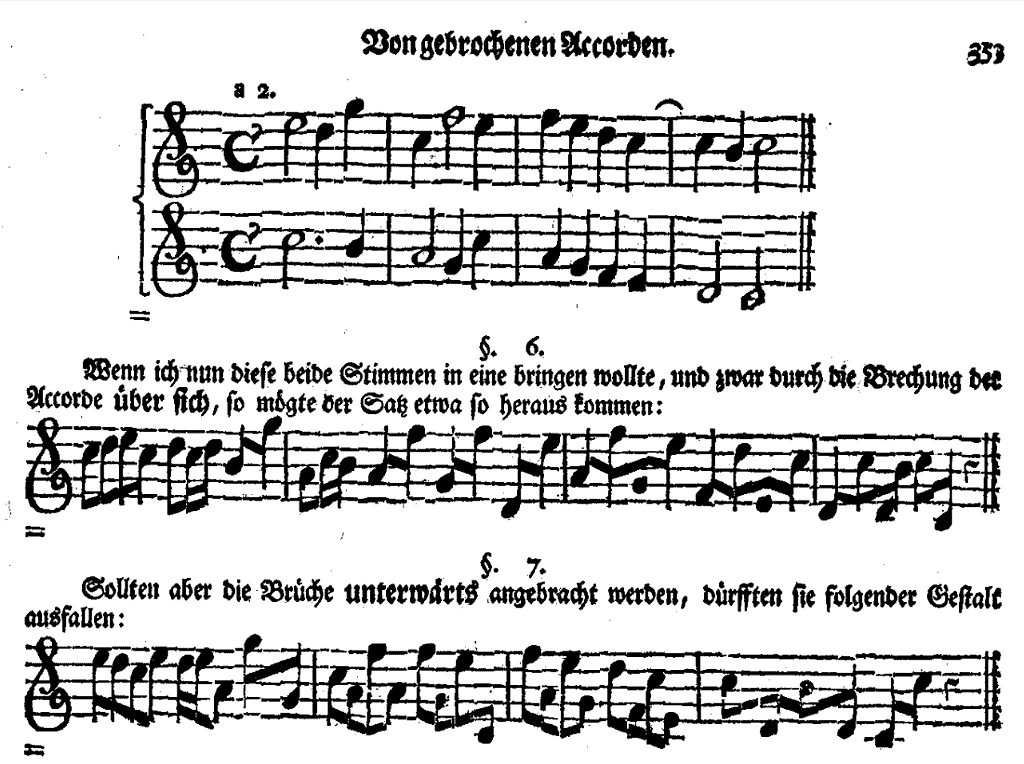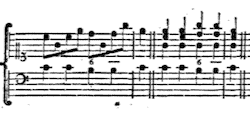Compound line is a technique where one written part represents two or more implied parts. This technique is characterized by arpeggiation and/or large, often ‘unmelodic’ leaps. Johann Philipp Kirnberger (1721–1783), amongst others, discusses compound line, focussing on arpeggiating per chord, and warns that the implied voice leading should be correct. According to him, the following example is poor because of the parallel octaves between the implied alto and bass:

This is the corrected version:

While Kirnberger’s examples of compound line mainly focus on simple chord progressions and arpeggiating, Johann Mattheson (1681–1764) illustrates how a more contrapuntal two-part model can be transformed into a single line with this technique, giving two possible versions:

There are a few mistakes in the compound lines. In the first version, the eighth note on beat 4 of bar 2 should be c1 instead of d1. And in the second version, the third last eighth note of bar 1 should be c2 instead of a1 and the last eighth note of the same bar should probably be b1 instead of g1.
Select Bibliography
Kennan, Kent. Counterpoint Based on Eighteenth-Century Practice — Fourth Edition (New Jersey: Prentice-Hall, 1999).
Kirnberger, Johann Philipp. Die Kunst des reinen Satzes in der Musik (vol. 1) (Berlin and Königsberg: 1771).
Mattheson, Johann. Der vollkommene Capellmeister (Hamburg: 1739).
Schubert, Peter & Christoph Neidhöfer. Baroque Counterpoint (New Jersey: Pearson Prentice Hall, 2006).
